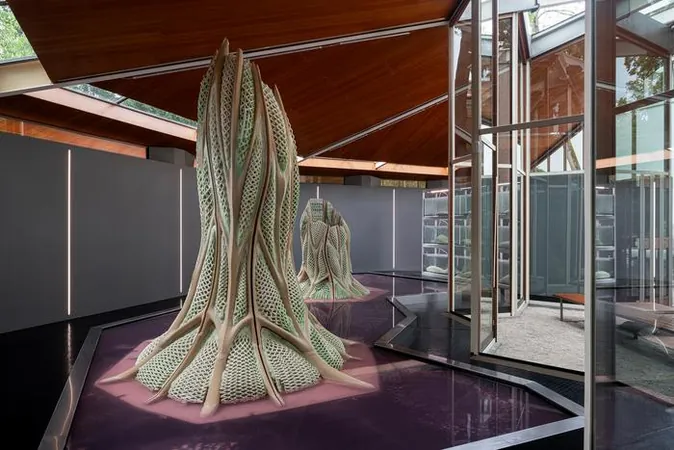
Revolutionizing Construction: 3D Printed Material Actively Cleans the Air!
2025-06-23
Author: Jia
A Game-Changer in the Fight Against Climate Change
In a groundbreaking development from ETH Zurich, researchers are pushing the boundaries of innovation by integrating living organisms into building materials. This unique approach aims to tackle the pressing issue of climate change through sustainable construction techniques.
Cyanobacteria Meet 3D Printing: The Future of Sustainable Architecture
Under the leadership of Professor Mark Tibbitt, an interdisciplinary team has successfully infused cyanobacteria into a printable hydrogel, resulting in a revolutionary material that not only grows but also actively absorbs carbon dioxide from the atmosphere. This innovative material thrives on sunlight and nutrient-rich artificial seawater, converting CO2 into biomass and minerals—the latter helping to store carbon in a stable form.
"This material not only supports life but also effectively captures carbon, creating a dual-benefit system for potential construction applications," Tibbitt shared in a recent press release.
Beyond Sustainability: Dual Functionality and Strength
The use of cyanobacteria does more than just absorb CO2; these tiny powerhouses also alter their surrounding chemical environment, leading to the formation of robust solid carbonates like lime. This enhances the material's structural integrity while serving as an additional carbon sink.
Impressive Results: Carbon Capture Like Never Before
Laboratory tests revealed that this innovative material can bind CO2 at an impressive rate of 26 milligrams per gram over 400 days—over three times more effective than traditional recycled concrete, which captures around 7 milligrams per gram. This remarkable efficiency marks a significant milestone in sustainable building materials.
3D Printing: The Key to Optimized Structures
3D printing plays a crucial role in this pioneering application, allowing the creation of optimized geometries that enhance light penetration and nutrient flow. According to Dalia Dranseike, a team member, these designs allow for efficient distribution of necessary nutrients and maximize the survival of the cyanobacteria for over a year.
What’s Next for This Groundbreaking Technology?
Looking ahead, while the dream of constructing entire buildings from this living material may be on the horizon, the immediate next step is to explore its application as a facade coating for existing buildings. This remarkable concept has already seen proof-of-concept installations showcased at prestigious events like the Architecture Biennale in Venice and the Triennale di Milano in Milan.
As the battle against climate change intensifies, innovations like this could reshape the future of architecture and environmental sustainability. Imagine living and working in buildings that actively cleanse the air around us—this could be just the beginning!

 Brasil (PT)
Brasil (PT)
 Canada (EN)
Canada (EN)
 Chile (ES)
Chile (ES)
 Česko (CS)
Česko (CS)
 대한민국 (KO)
대한민국 (KO)
 España (ES)
España (ES)
 France (FR)
France (FR)
 Hong Kong (EN)
Hong Kong (EN)
 Italia (IT)
Italia (IT)
 日本 (JA)
日本 (JA)
 Magyarország (HU)
Magyarország (HU)
 Norge (NO)
Norge (NO)
 Polska (PL)
Polska (PL)
 Schweiz (DE)
Schweiz (DE)
 Singapore (EN)
Singapore (EN)
 Sverige (SV)
Sverige (SV)
 Suomi (FI)
Suomi (FI)
 Türkiye (TR)
Türkiye (TR)
 الإمارات العربية المتحدة (AR)
الإمارات العربية المتحدة (AR)